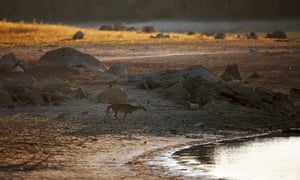Unseasonably warm and dry conditions, which affected much of the south-east of the US in October, have continued over the past few days.
A wide area from Texas, to Mississippi, Alabama and Florida, has had day-time temperatures reaching into the high 20s and low 30s celsius, with some areas barely getting any rainfall for over a month.
The drought conditions are being caused by a deflected jet stream, carrying moisture and rain further north and allowing high pressure to persist through the south-eastern US.
A storm system accompanied by strong northerly winds brought the first significant cold spell of the season to northern Iran over the past week, particularly to the mountainous province of Ardebil. While snow is not unusual here, the rate at which it accumulated led to disruption to transport and power, and also the closure of schools and public buildings.
In some areas more than 40cm of snow was reported in a 48-hour period and some of this was delivered by thunderstorm activity, causing an unusual combination of lightning strikes and snowfall.
Violent thunderstorms and torrential rain struck parts of Egypt late last week, generating destructive floods. At least 30 people are confirmed to have been killed by the flooding, and more than 70 injured. Large-scale damage was caused to buildings and power supplies. In several settlements neighbouring the Red Sea cars were carried away from land and into the sea by the power of the flood water. The clean-up is expected to take several days.

No comments:
Post a Comment